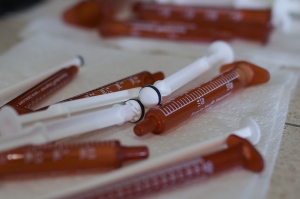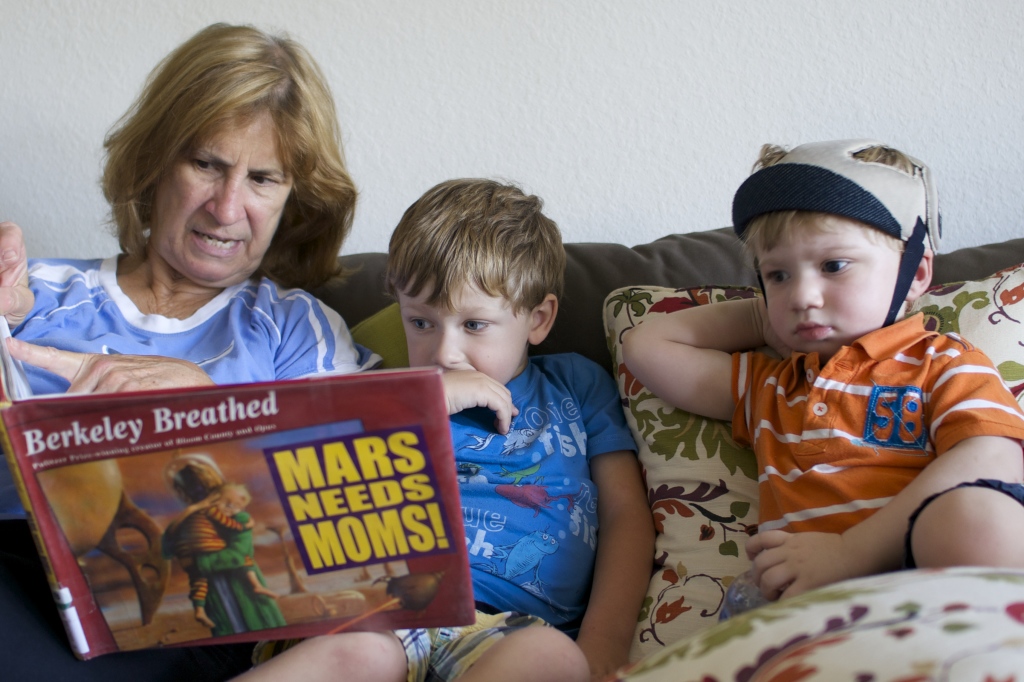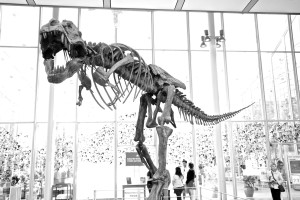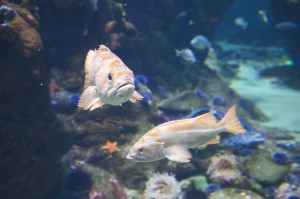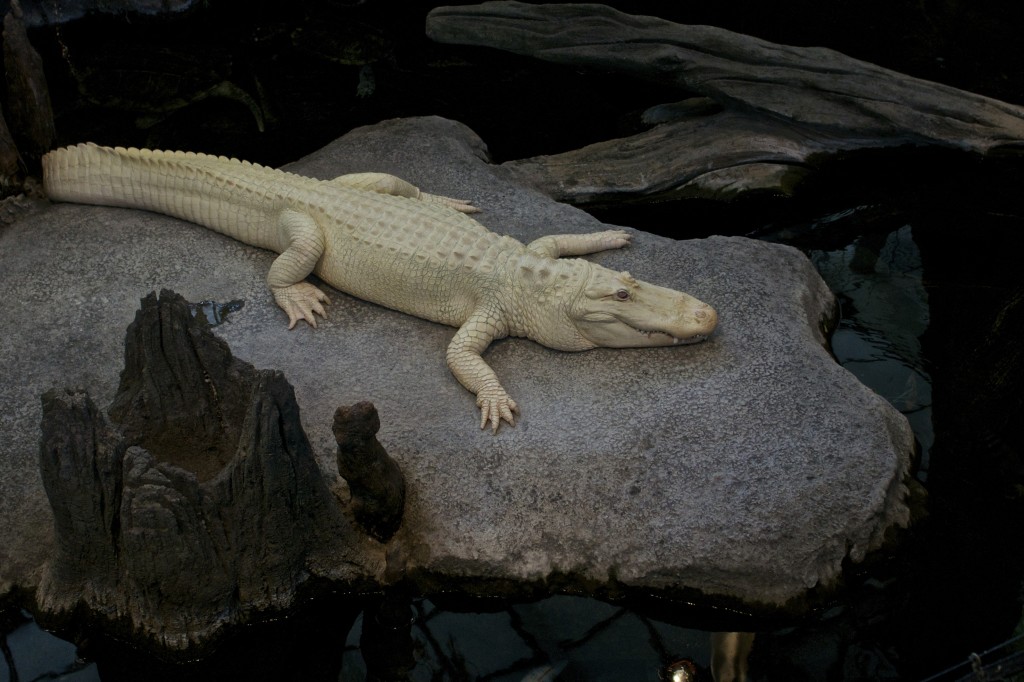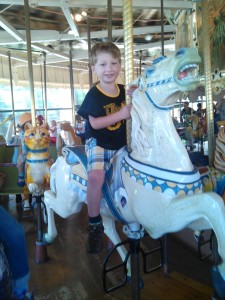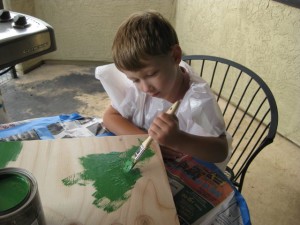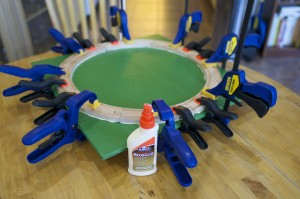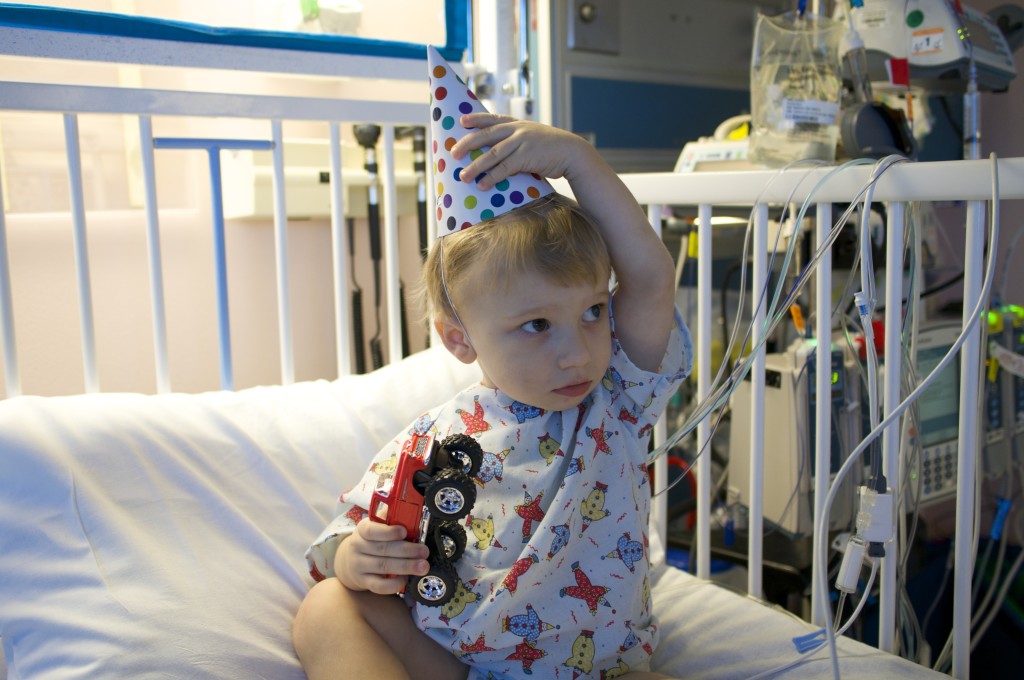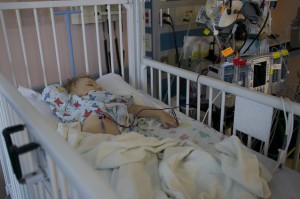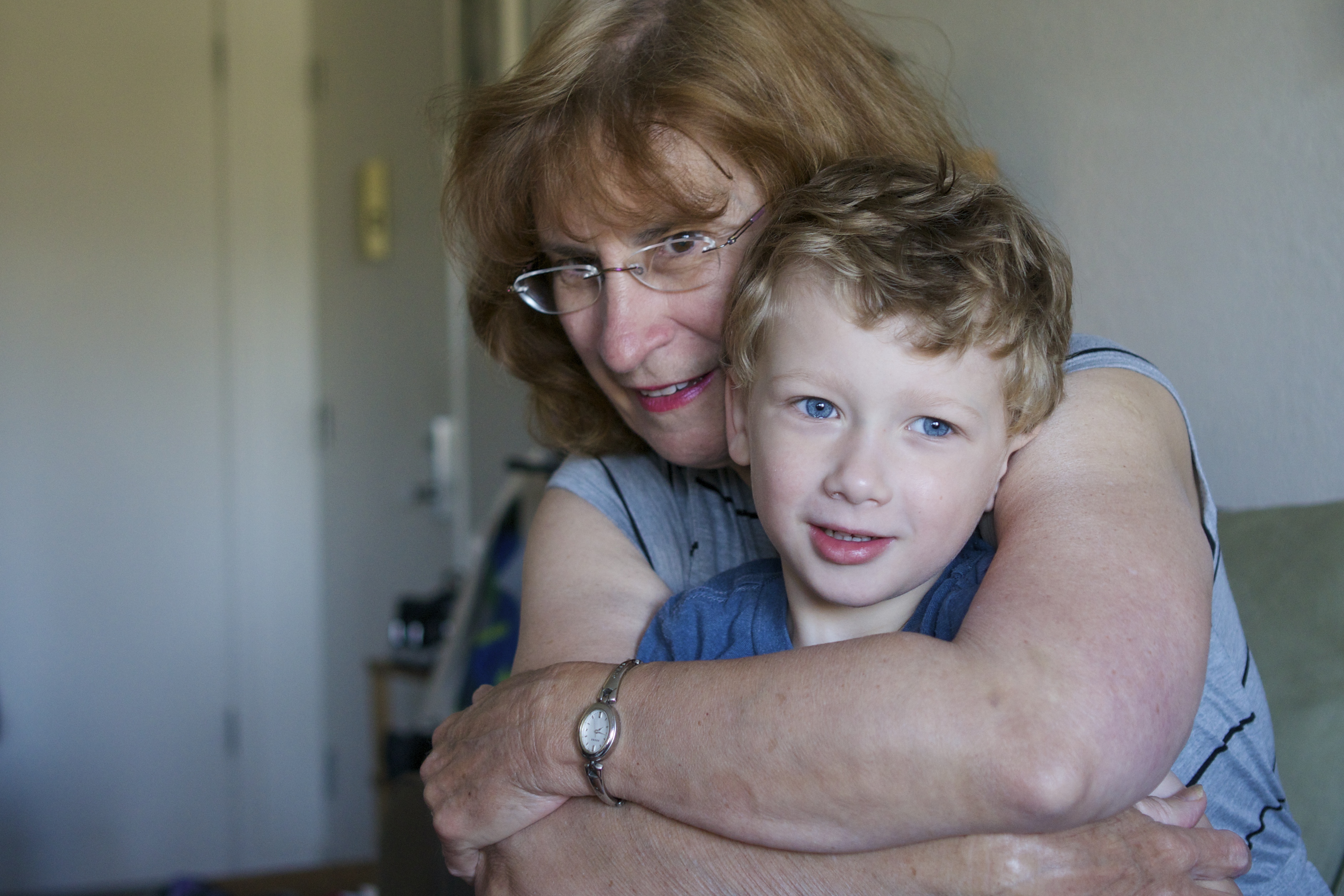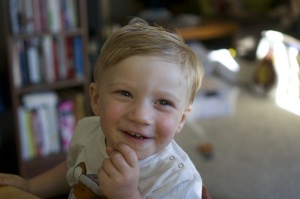This year we decided to have a non-traditional Christmas. Forget the Christmas tree, forget the big turkey dinner… In fact, forget having it at home altogether. No, this year was very “antiseptic chic”, and was a mixed blessing. That said, we hope this is the first and last time we do Christmas this way.
While I suggest that “we” chose this year’s method of celebration, in reality it was DKC that made all the choices for us. It started on Dec 22nd, when young Clark woke up at 10pm, cranky and sweaty. His temperature was 102 degrees. This, by default, always means a call to our BMT specialists and a subsequent trip to the local emergency room.
After a painful (but typical) “all nighter” in the emergency room, we were sent home and told to wait for a call about the blood culture they had pulled from Clark. Sure enough, 24 hours later, we got a call saying that Clark had Gram Negative Rods in his blood and that we would need to be admitted to the hospital. So at 7am on Dec 24th, we packed our bags, and headed out to UCSF to enjoy our “modern minimalist” Christmas.
If this sounds at all familiar, it is because this is the second time Clark has had a blood infection. And just like last time, he had Gram Negative Rods as well. So we knew the drill, and we knew our stay would easily be 3-4 days.
But as I suggested, the trip was really a mixed blessing. UCSF definitely made the best of a terrible situation (Thank you UCSF!), and in fact, there was also some silver linings…
The bad news, was that we had to spend Christmas Eve, Christmas Day, and Boxing day in the hospital. And, there is no denying it, it sucked. Trapped inside a hospital room, with 2 little high-energy boys, was a disaster in the making.
But there was some good news as well. The hospital was kind enough to let us all stay together. In the past, other hospitals have not allowed children under the age of 12 to stay overnight. But UCSF has no such rule, and for that, we thank them!
As well, since we had to stay over Christmas, everyone was super, incredibly, patient and kind to us. It was really nice how everyone working those days tried so hard to make our stay comfortable and (as much as possible) enjoyable – especially since each and every one of them were also sacrificing time with their own loved ones and family.
Finally, if there was ever a chance to show our budding 4 year old that indeed there is a Santa Clause, it happened during our stay.
Bright and early on Christmas day, Connor awoke from the couch he and I were sharing. I asked him what was wrong. He ignored me, climbed over my crumpled body and jumped to the ground. He then walked over and opened the bathroom door. I asked him if he had to go to the bathroom, and he said “no”. So I asked him what he was doing? He said, “I’m looking for the presents Santa left”.
This was a bit of a shock. Beth and I were not prepared to give them gifts. There simply wasn’t time to wrap and pack them, and we had thought we would just re-do Christmas after we were discharged. But somehow – the true calendar day had not escaped our 4 year old child prodigy. He knew December 25th had arrived, and he knew Santa Clause should have left gifts.
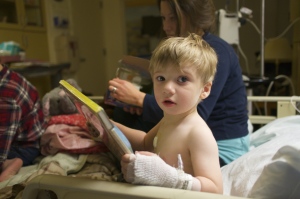 I was startled, and I looked over at Beth for an answer. But she just smiled, and told Connor to look in the chair near the door. And this readers, made me a true believer as well. In the chair beside the door sat 2 huge cloth bags. One with a tag saying “Connor” and one with a tag saying “Clark”. And sure enough, they were filled with wonderful books, puzzles and toys for both boys. Santa had found them, even in their 7th floor hospital room!! Connor was, how to say this… ecstatic.
I was startled, and I looked over at Beth for an answer. But she just smiled, and told Connor to look in the chair near the door. And this readers, made me a true believer as well. In the chair beside the door sat 2 huge cloth bags. One with a tag saying “Connor” and one with a tag saying “Clark”. And sure enough, they were filled with wonderful books, puzzles and toys for both boys. Santa had found them, even in their 7th floor hospital room!! Connor was, how to say this… ecstatic.
As it turns out, the Child Life staff at UCSF were prepared for just such an event, and they put together bags of toys for all the children having to be hospitalized over Christmas Day. Beth and I were so thankful. UCSF, once again, had not failed us nor our boys. What a wonderful surprise. Thank you so much UCSF!
Santa Clause had remembered the boys, but what about Beth and I? Surprisingly, Santa didn’t forget about us either. We got our gift a couple hours before the kids did, at 12:30am Christmas morning. At just after midnight, the UCSF Operating team removed Clark’s broviac. The reasons had to do with the possibility it was harboring his blood infection, but whatever the reason, we were glad to see it go. 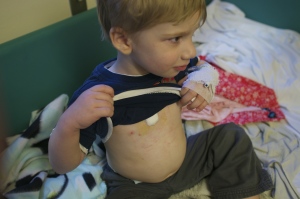 After over 9 months of flushes, cap changes, bandage changes, etc…, we could not have asked for a greater “gift”. And our little boy’s cherub like stomach is once again free of any medical technology. It is like he is a normal little boy, capable of “real” baths, wrestling, and jumping in puddles. This really was a wonderful gift, and for that – we are thankful for our non-traditional Christmas.
After over 9 months of flushes, cap changes, bandage changes, etc…, we could not have asked for a greater “gift”. And our little boy’s cherub like stomach is once again free of any medical technology. It is like he is a normal little boy, capable of “real” baths, wrestling, and jumping in puddles. This really was a wonderful gift, and for that – we are thankful for our non-traditional Christmas.






